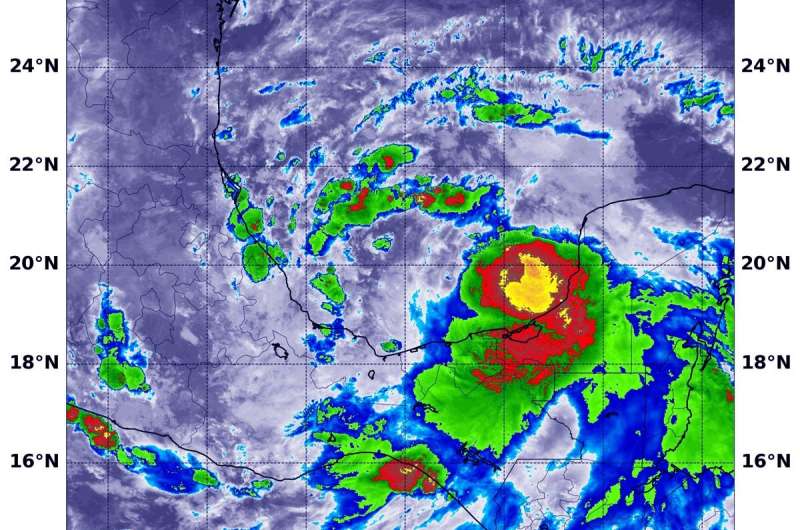NASA sees strong storms in developing gulf system 91L

NASA's Aqua satellite used infrared light to analyze the strength of storms in the developing low pressure area designated as System 91L is it moved through the Gulf of Campeche just north of Mexico's Yucatan Peninsula.
Infrared data provides temperature information, and the strongest thunderstorms that reach high into the atmosphere have the coldest cloud top temperatures.
On June 3 at 4:05 a.m. EDT (0805 UTC), the Moderate Imaging Spectroradiometer or MODIS instrument that flies aboard NASA's Aqua satellite gathered infrared data on developing System 91L. Strongest thunderstorms created a southern ring around the center from west to east, where cloud top temperatures were as cold as minus 80 degrees Fahrenheit (minus 62.2 Celsius). Cloud top temperatures that cold indicate strong storms with the potential to generate heavy rainfall. Those strongest storms were located just off the coast of the state of Campeche and the eastern part of the state of Tabasco.
On June 3 at 2 p.m. EDT, the National Hurricane Center (NHC) noted that System 91L has a medium chance to develop into a depression within the next 24 hours. NHC Forecaster Zelinsky noted in the update, "Showers and thunderstorms associated with a broad area of low pressure located over the Bay of Campeche have become a little better organized since yesterday. However, recent satellite-based wind data indicate that the circulation of the low is elongated and poorly defined."
This system is forecast to move slowly northwestward toward the northeastern coast of Mexico, and could become a tropical cyclone before it moves inland in a day or two.
Even if System 91L does not develop into a tropical cyclone, forecasters at NHC said the disturbance will likely produce heavy rainfall over portions of southern and eastern Mexico during the next few days. Heavy rainfall is also likely to spread over southeastern Texas and Louisiana through Thursday.
Several computer models take System 91L on a northerly path, and interests along the Gulf coast of Mexico should monitor the progress of this system.
Provided by NASA's Goddard Space Flight Center





















